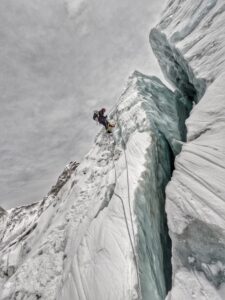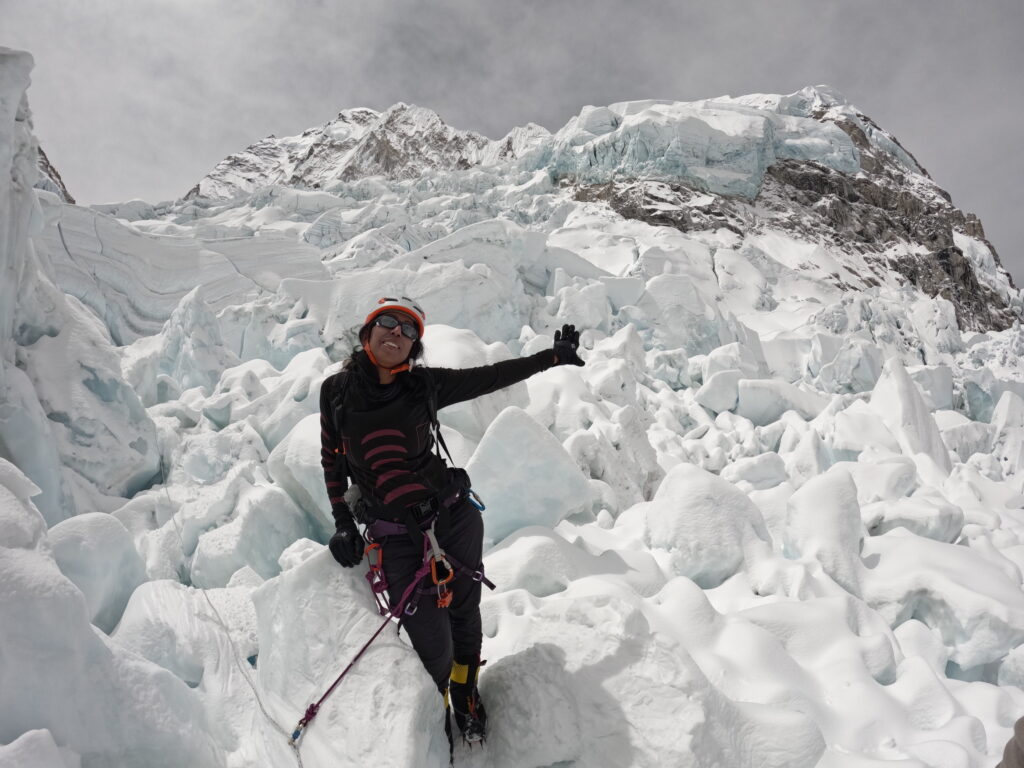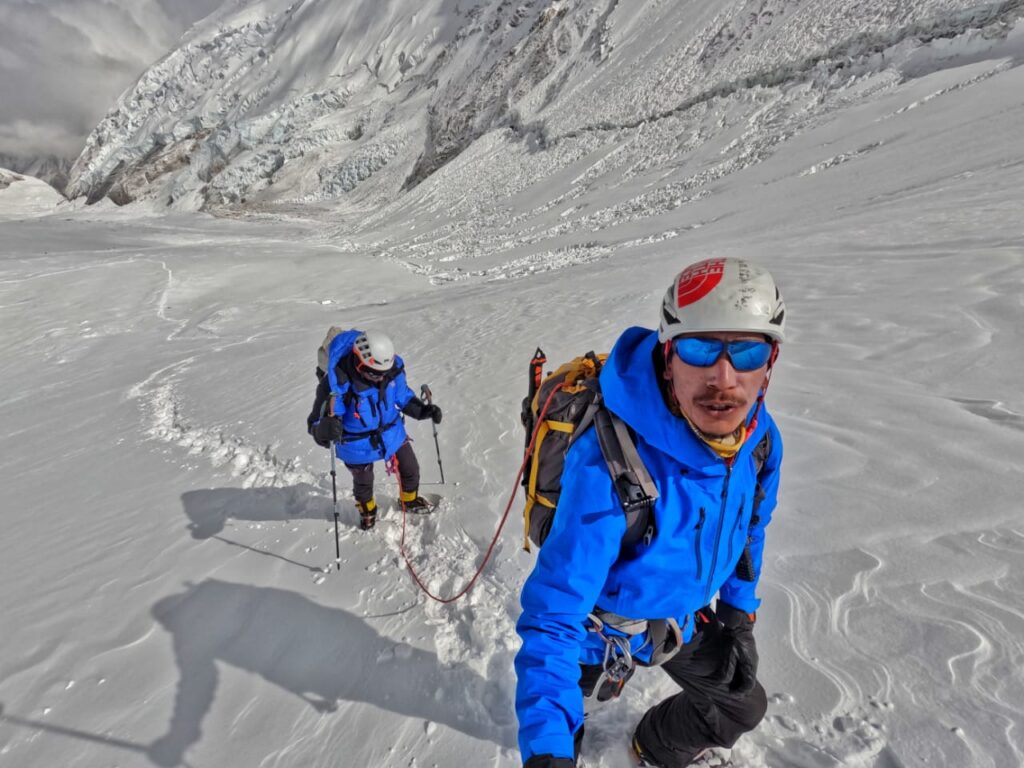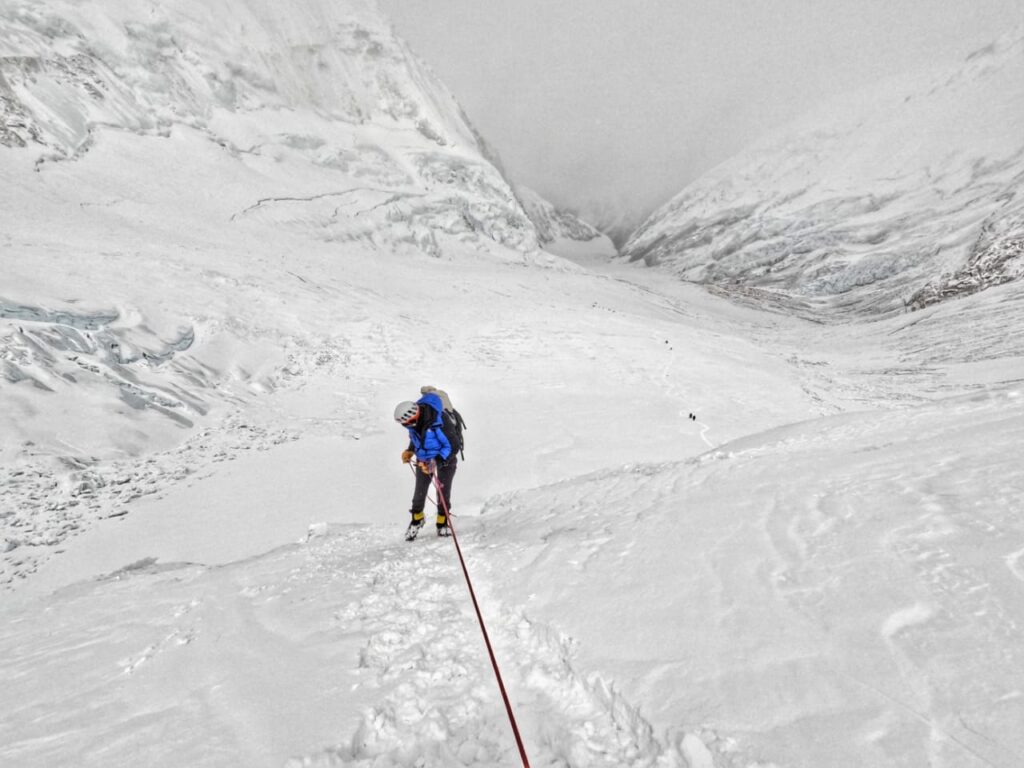How the jet-setting biomedical engineer Ruchika Singhal made it to 7,000 meters on Mount Everest
Growing up in a conservative middle-class family in Delhi, India, Ruchika Singhal never had much exposure to sports. Beyond a walk around the neighborhood, athletics were simply something women didn’t do. During her undergraduate and graduate years of study in the United States, little changed; Singhal would play the occasional game of basketball, but never pursued exercise seriously. The basic concept of sports was, “I like this from a distance, but I don’t do this,” she says.
Then Singhal decided to climb mountains.

A biomedical engineer by trade (she holds a master’s in the field from Johns Hopkins, as well as an MBA from the University of Chicago), Singhal is the president of Medtronic LABS, a nonprofit arm of the healthcare-technology company focused on expanding access to healthcare for low-income communities around the world. Minus a two-year stint elsewhere, Singhal has been with Medtronic for the past 20-plus years. These days, she describes her life as classic jet-setting, being gone two to three weeks a month from her home base in Colorado, mostly to Asia and Africa.
In 2001, fresh out of graduate school, Singhal took a job with Medtronic in Minneapolis. “I’d always had a fascination with mountains,” she says, going back to family trips to the Himalayan foothills in summer. “Once I was on my own and had a job, I was like, ‘Ooh, I want to go climb mountains.’” Singhal signed up for a rock-climbing course through the gear shop Midwest Mountaineering, her best option for getting vertical in the flatland state. On the course, she made two friends, and they hatched plans to climb Mount Rainier (14,411), the massive statovolcano in Washington State. To train, Singhal climbed the stairs of the IDT Center, a 57-story skyscraper in downtown Minneapolis.
“I had never seen snow until I was 17 years old,” recalls Singhal. “I loved the mountains from a distance but had only seen pictures in National Geographic.” She remembers thinking, “It’s only people from the West that get to go do these things; people from India don’t go do these things.”
Singhal’s first trip to Rainier, in 2002, was a “disaster.” While she made it to a respectable 12,000 feet on the Ingraham Glacier, Singhal found herself overwhelmed by the altitude and the rigors of the alpine environment. “I had no idea of altitude [nor]how much training you should have,” she says. “I had never worn crampons before. It was all the things you do wrong.” Singhal returned to the peak in 2007, climbing it successfully as part of a more comprehensive five-day guided course.
In 2008, she moved to Colorado, where Medtronic has a campus northeast of Boulder in the suburb of Gunbarrel. Now with direct access to the mountains—the Rockies—Singhal learned to ski, hiked and scrambled the state’s Fourteeners, and continued to dabble in climbing trips to places like Ouray and Ecuador as her busy schedule permitted. But there was no real structure to either her goals or her training.
Singhal had, however, always “nurtured this fantasy in my head that I want to get to an 8,000-meter peak.” She didn’t even need to make the summit; she’d be happy reaching 8,000 meters then turning around. Singhal finally had the courage to voice her intention in December 2018 while on a guided trip in the San Juan Mountains of southwest Colorado as part of her fortieth-birthday celebration. Her guide, she says, told her, “Sure, you can totally do it,” then he recommended she reach out to Scott Johnston at Uphill Athlete (UA) for a training plan. Singhal has been working with UA for 3.5 years now, mainly with the coach Maya Seckinger, a competitive cross-country skier who’s been with UA since 2016.

“One of the most amazing things about Uphill Athlete has been that despite my insane travel schedule, they’ve been able to adapt training so that I could make it work within that,” says Singhal. “With the jet lag and the time zones and whatever I have access to in terms of hotel gyms, they somehow make it work.” She has been diligent, waking at 4 a.m. before a busy workday to put in two hours on the treadmill in a tiny hotel gym, or making do with whatever free weights are on hand for her muscular-endurance workout when a weight vest is nowhere to be found.
Throughout, Singhal has found UA’s incremental approach to be majorly beneficial—it, coupled with Seckinger’s willingness to customize the workouts, has let Singhal made steady gains in a supportive, structured, non-intimidating environment, especially for someone with no athletic background. “When you break it down, training-wise, you can do it!” she says. “Six months ago, if somebody had said, ‘Put on a 40-pound vest and do these many split squats,’ I would have said, ‘Are you kidding? I can’t even do split squats without a vest!’ [But] by the end of it, you’re like, ‘That wasn’t hard.’”
As she’s progressed, Singhal has continued to gain proficiency in her alpine skills, as well as confidence. Her first big goal, which she would attempt this past spring, was to see how high she could climb on Mount Everest. Along the way, as she took “mini-trips” to places like Chamonix, Wyoming and Montana to ice climb, and Washington State to alpine climb, Singhal saw the training pay off. “I was always amazed how good I felt,” she says, even after three or four consecutive days in the mountains. “That always gave me such a boost of confidence. I felt like I could just keep going and not feel tired.”
“I wasn’t sore afterwards. I recovered really fast,” says Singhal. “Whatever they’re making me do is working.”

As a stepping-stone en route to reaching 8,000 meters, Johnston recommended Singhal gun for Camp 3 on Mount Everest, at 23,500 feet (7,162 meters) on the Lhotse Face. She signed up for an expedition with Climb the Seven Summits, and found herself on Everest in April 2022.
For her first week above 15,000 feet, Singhal struggled with the altitude (Everest’s basecamp is at 17,600 feet). She spent a week there trying to acclimatize, feeling like she was progressing twice as slowly as her fellow expedition members, wondering if her goal hadn’t been too, well, lofty. Then slowly but surely, Singhal began to feel better. “Once I adjusted to the altitude, everything else was easy,” she says. “There wasn’t a single day that I was sore, and my speed was really good. I could keep going for the hours you needed to keep going.”
Singhal made it through the Khumbu Icefall to Camp 1 (19,500 feet) in eight hours, the average time for summit aspirants, she says, surprising herself with her pacing. “That night when we left for Camp 1, I was like, ‘I just want to go be in the icefall, as far as I get’—that was my original goal,” she says. But she blew this out of the water. After a rest day at Camp 1, the trek up to Camp 2 at 21,500 feet went similarly smoothly. It was there, as she and her guide Pemba Sherpa walked into camp at sunrise, that the reality of where she was hit her.
“I cried for an hour and a half; I couldn’t stop crying,” says Singhal. “You could see most of the route leading up from Camp 2, the Lhotse Face, the Hillary Step, the South Summit. You could see almost all of it.” Having come from a conservative culture in which women aren’t allowed to do anything athletic, Singhal found herself sobbing with joy when a friend told her, “You go, girl!”
“Your whole life, where you’re from, you couldn’t have imagined to be standing there,” she says. “This is the beginning of all the things I want to do with mountaineering.” The next day she and Pemba climbed to 7,000 meters on the Lhotse Face, turning around shy of Camp 3 in the face of incoming weather, though Singhal was perfectly pleased with her high point. Her goal of getting to 8,000 meters remains in her sights, with a trip to either Alaska or Antarctica pending for the upcoming winter/spring season.
Singhal says she couldn’t have done it without Uphill Athlete and the community they’ve created. “The way they talk about it, it just feels like, ‘OK, maybe I could think about this.’ Which was a huge step for me, mentally. It was just so open and welcoming,” she says.

